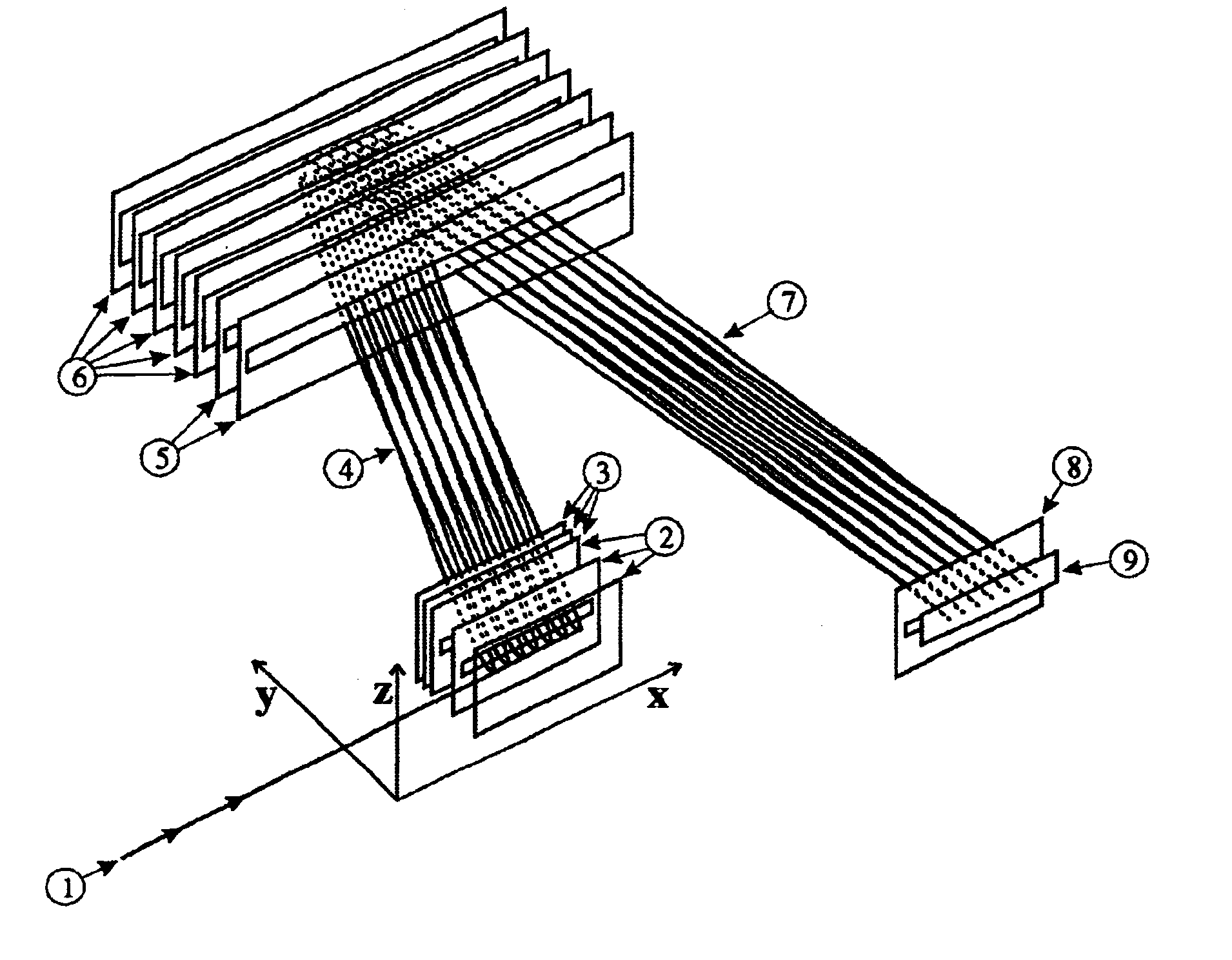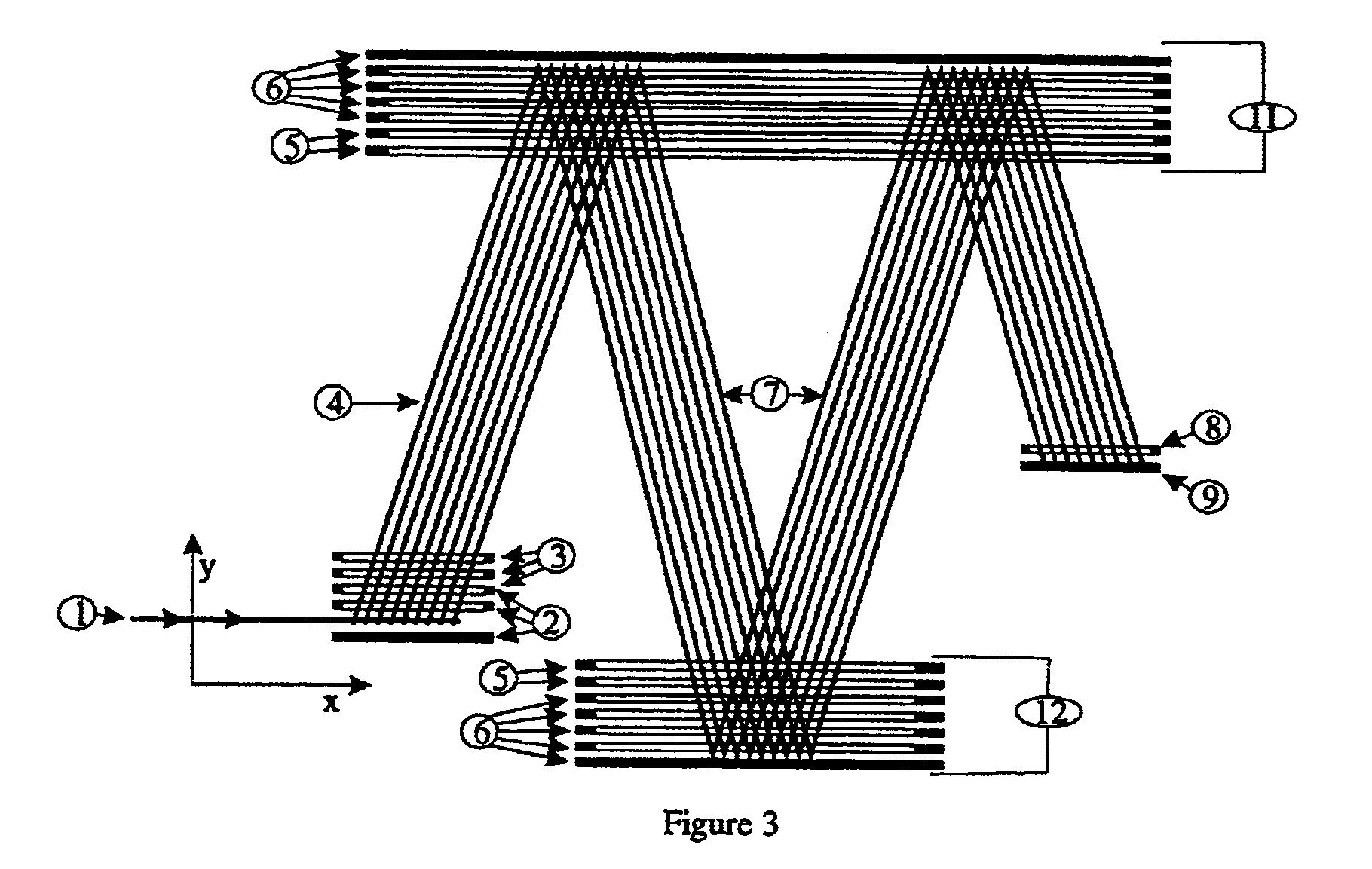Gridless time-of-flight mass spectrometer for orthogonal ion injection
a time-of-flight and mass spectrometer technology, applied in the field of time-of-flight mass spectrometers, can solve the problems of no spectrometer which is better than a time-of-flight mass spectrometer, small-angle scatter at the openings in the grid cannot be reduced, and only small-angle scatter can be reduced
- Summary
- Abstract
- Description
- Claims
- Application Information
AI Technical Summary
Benefits of technology
Problems solved by technology
Method used
Image
Examples
Embodiment Construction
A preferred embodiment is depicted in FIG. 1. A fine primary ion beam (1), which defines the x-direction, is injected into the purser (2). The fine ion beam can originate from an electrospray ion source, for example. The pulser (2) consists of three electrodes, of which the first electrode acts as a repeller electrode and the second and third electrodes take the form of slit diaphragms. The ion beam consists of ions with low kinetic energy of approx. 4 to 40 electron-volts, which are injected into the space between the repeller electrode and the first slit diaphragm; the ions therefore fly relatively slowly, whereby the velocity depends on mass. (To be more accurate, the velocity depends on the ratio between the mass and the charge m / e, but for the sake of simplicity reference is only made to the mass m). While the pulser is being filled with ions the first two electrodes are at ambient potential so they do not disturb the flight of the ions. The third electrode is at acceleration p...
PUM
 Login to View More
Login to View More Abstract
Description
Claims
Application Information
 Login to View More
Login to View More - R&D
- Intellectual Property
- Life Sciences
- Materials
- Tech Scout
- Unparalleled Data Quality
- Higher Quality Content
- 60% Fewer Hallucinations
Browse by: Latest US Patents, China's latest patents, Technical Efficacy Thesaurus, Application Domain, Technology Topic, Popular Technical Reports.
© 2025 PatSnap. All rights reserved.Legal|Privacy policy|Modern Slavery Act Transparency Statement|Sitemap|About US| Contact US: help@patsnap.com



